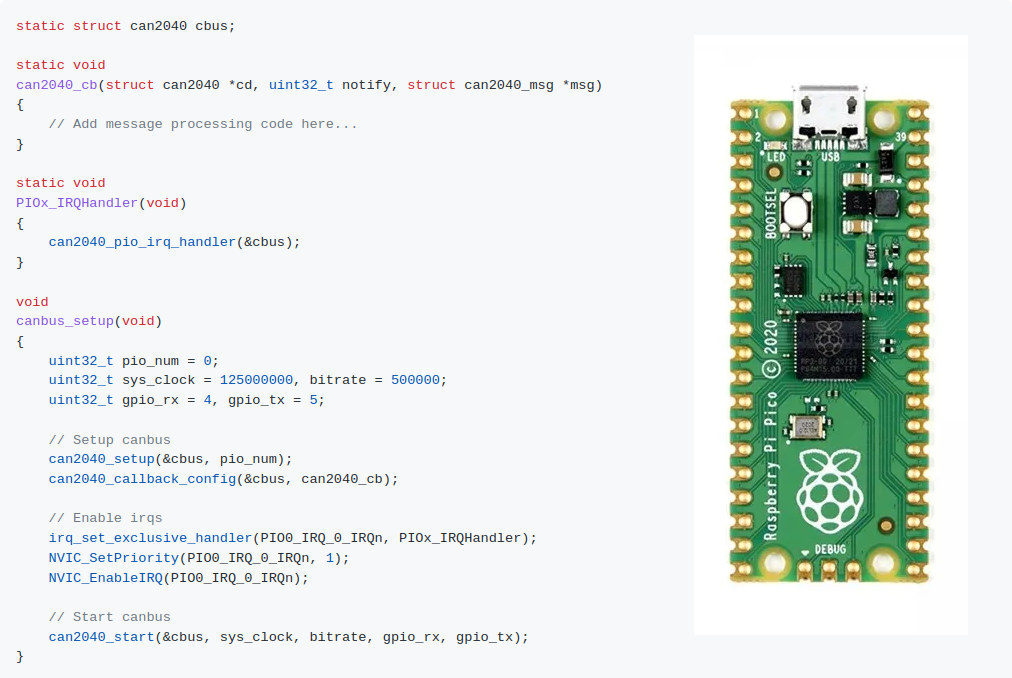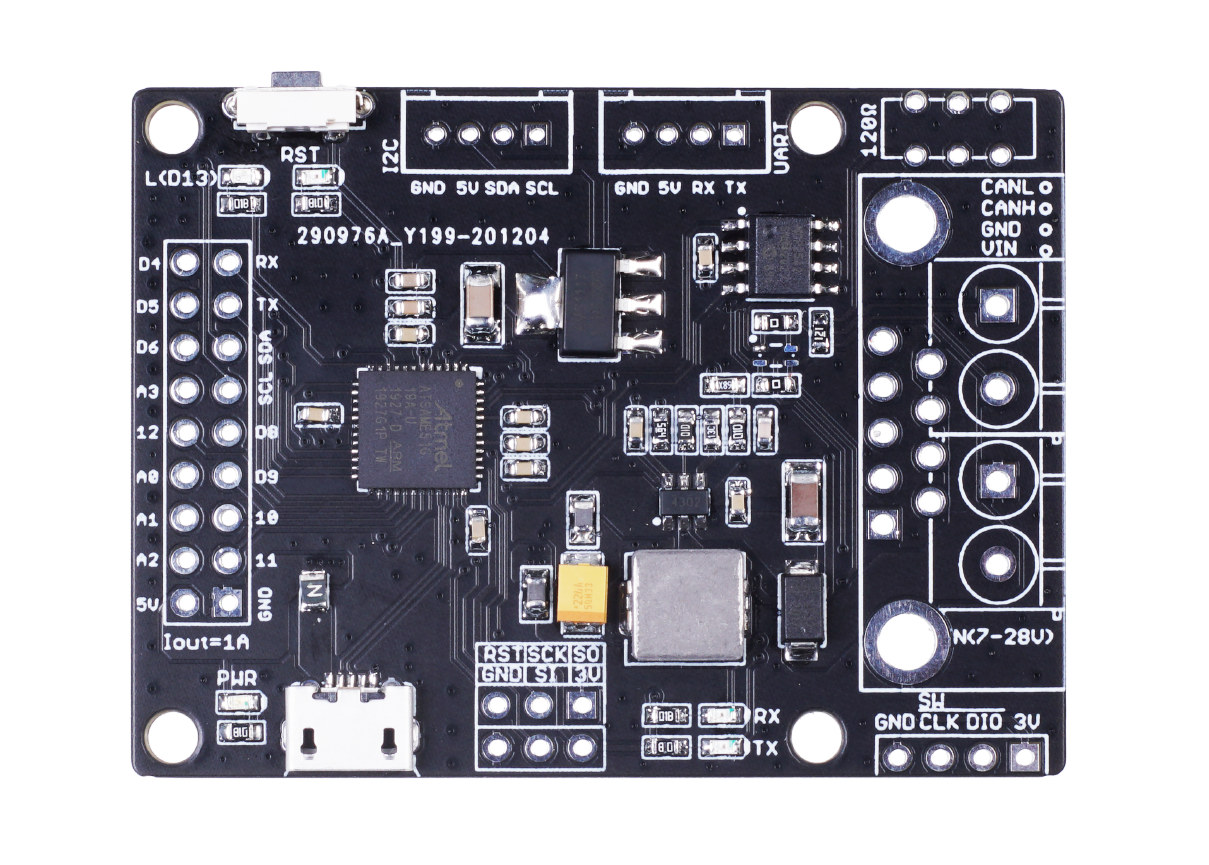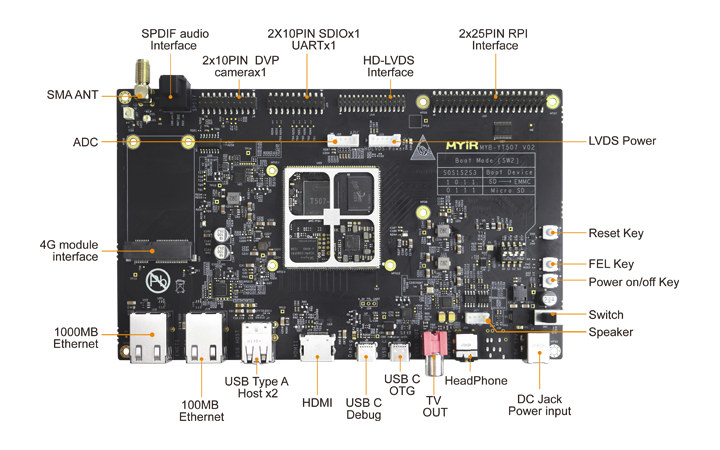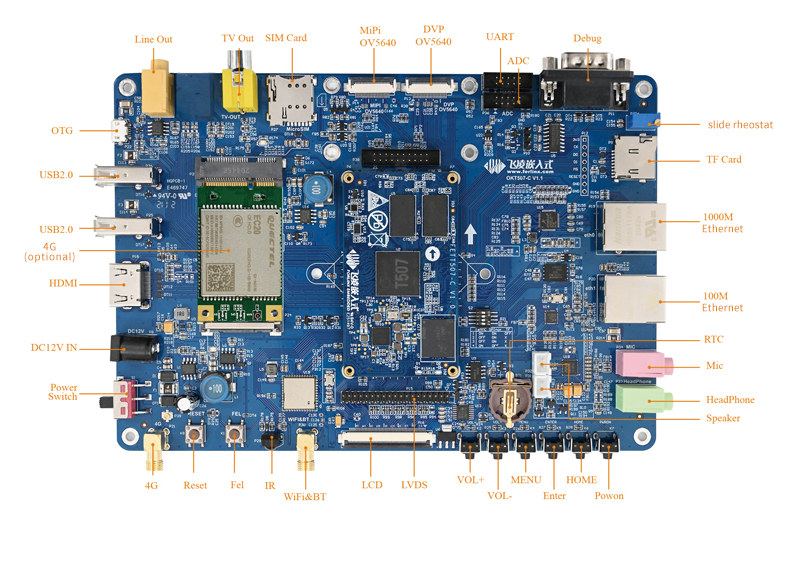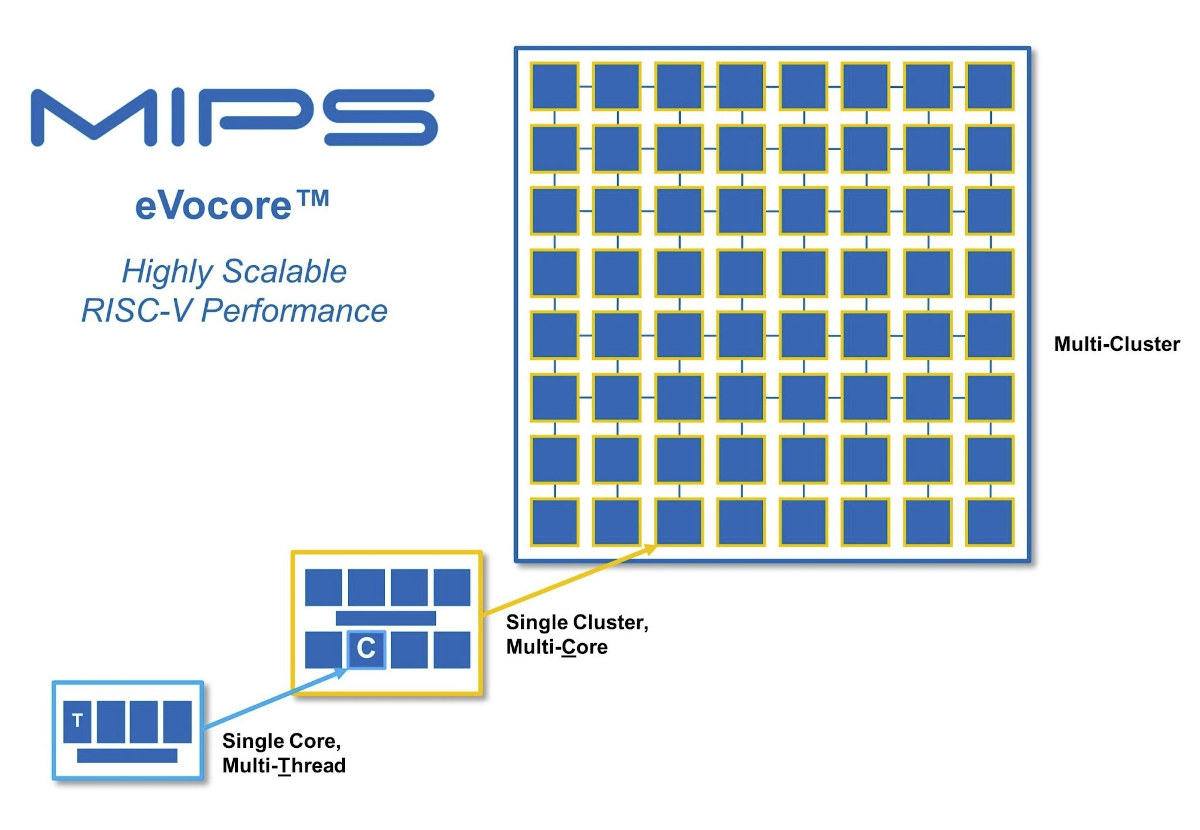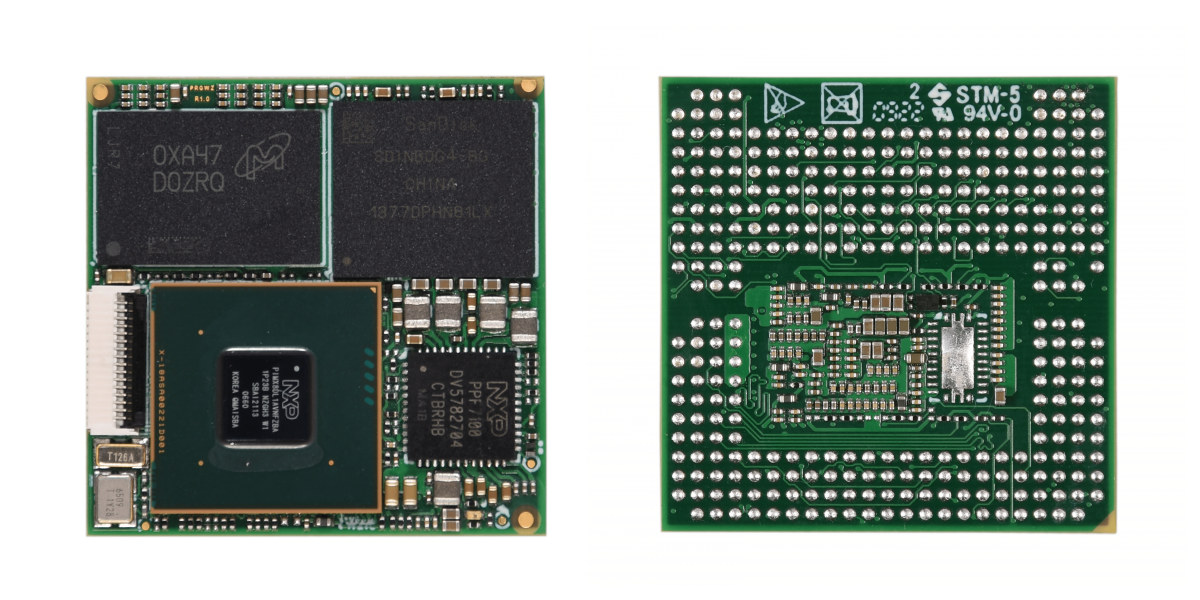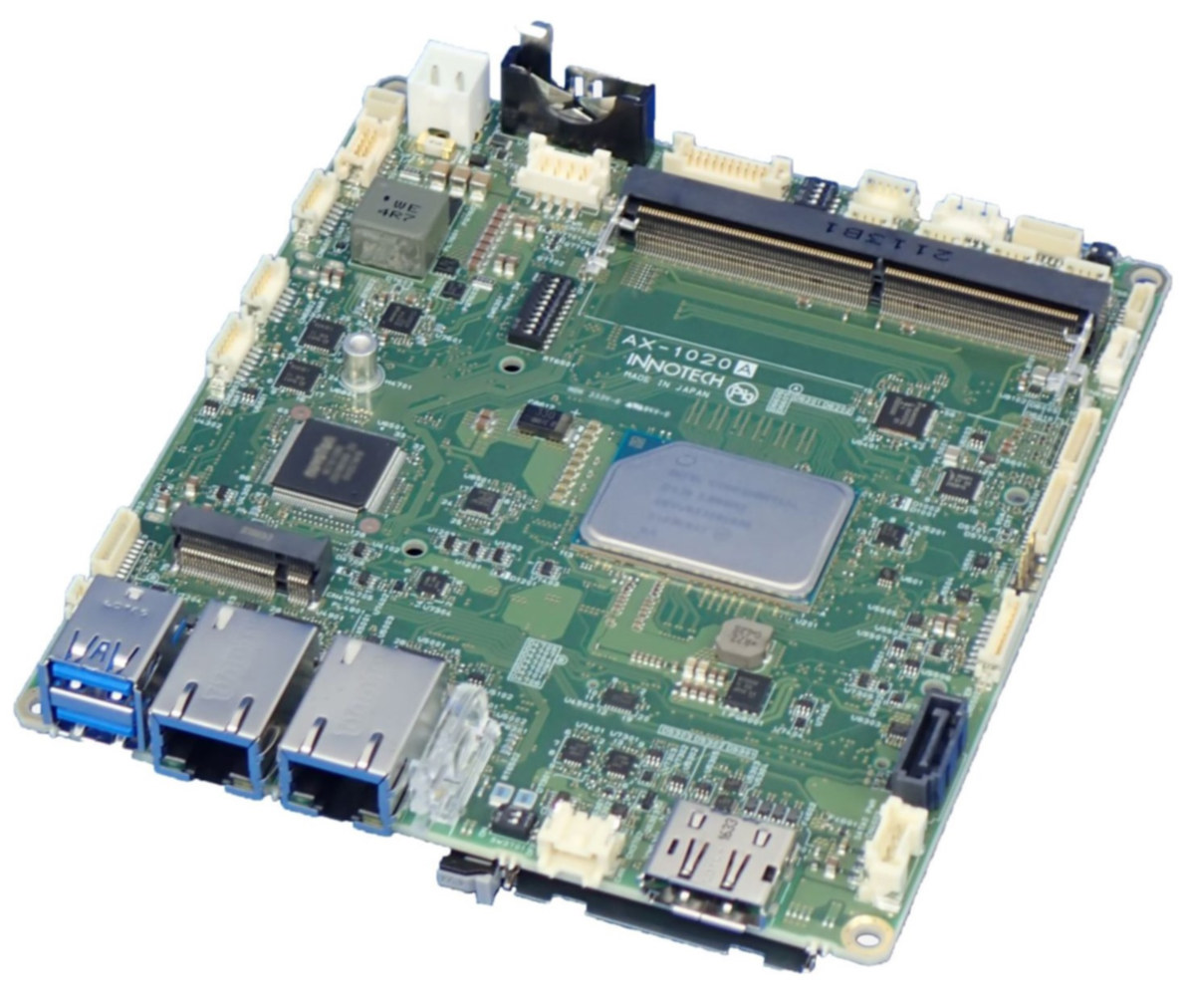The can2040 project is a software CAN bus implementation for the Raspberry Pi RP2040 microcontroller that leverages programmable I/Os (PIO) to achieve reading and writing CAN 2.0B data frames at rates up to 1Mbit per second. Kevin O’Connor, the developer of the project, further explains the implementation uses only one of the two RP2040 PIO hardware blocks, so it is possible for a single Raspberry Pi RP2040 chip to have two separate CAN bus interfaces. Some processing also happens on one of the Arm Cortex-M0+ cores of the microcontroller with the processing time dependent on the amount of bus traffic, and a fully saturated CAN bus at the fastest supported rate of 1Mbit/s may use up to around 30% of that core when clocked at 125MHz, so that should still leave plenty of room for other tasks that may run on the system. I could not find any information about […]
CANBed M4 SAM E51 development board features MCP2542FD CAN transceiver
CANBed M4 development board based on Microchip SAM E51 Cortex-M4 microcontroller and MCP2542FD CAN transceiver provides a more powerful alternative to the CANBed RP2040 with a Raspberry Pi dual-core Cortex-M0+ microcontroller introduced last year. The board supports both CAN 2.0 and CAN FD with a 4-pin terminal block or a DB-9 connector, and offers expansion capabilities though two Grove connectors, and an 18-pin IO header. CANBed M4 specifications: MCU – Microchip ATSAME51G19A Arm Cortex M4 core @ up to 120 MHz with 512KB flash, 192KB RAM CAN Microchip MCP2542FD CAN transceiver with support for CAN 2.0 and CAN FD up to 2+ Mbps Input interface – DB-9 connector or terminal block 120 Ohm terminal resistor USB – 1x Micro USB port for programming Expansion I2C Grove connector UART Grove connector SPI header 18-pin I/O header with up to 12x GPIOs, UART, I2C, 4x analog inputs, 5V, and GND Misc – […]
AEC-Q100 qualified module features Allwinner T507-H processor for automotive applications
We first wrote about Allwinner T507 when we covered a module and devkit from Forlinx, but now MYiR Tech has designed its own AEC-Q100 qualified system-on-module (MYC-YT507H) and the MYD-YT507H development board based Allwinner T507-H processor. MYC-YT507H – Allwinner T507-H SoM Specifications: SoC – Allwinner T507-H with a quad-core Arm Cortex-A53 processor @ 1.5GHz, Arm Mali-G31 MP2 GPU with support for OpenGL ES 3.2/2.0/1.0, Vulkan1.1, OpenCL 2.0; 4K60 H.265/VP9/AVS2 video decoder, 4K H.264/MJPEG video encoder System Memory – 1 or 2GB LPDDR4 Storage – 8GB eMMC flash, 32Kbit EEPROM (or is it 32KB/256Kbit – see block diagram below) 222x castellated holes with 1.0mm pitch for carrier board connection Networking – 1x RGMII and 1x RMII Video 1x HDMI 2.0a up to 4Kp60 2x single-channel LVDS or 1x dual-channel LVDS or 24-bit RGB up to 1080p60 1x TV CVBS output with PAL/NTSC Camera – 1x DVP digital camera, 1x MIPI CSI […]
Embedded World 2022 – June 21-23 – Virtual Schedule
Embedded World 2020 was a lonely affair with many companies canceling attendance due to COVID-19, and Embedded World 2021 took place online only. But Embedded World is back to Nuremberg, Germany in 2022 albeit with the event moved from the traditional month of February to June 21-23. Embedded systems companies and those that service them will showcase their latest solution at their respective booths, and there will be a conference with talks and classes during the three-day event. The programme is up, so I made my own little Embedded World 2022 virtual schedule as there may be a few things to learn, even though I won’t be attending. Tuesday, June 21, 2022 10:00 – 13:00 – Rust, a Safe Language for Low-level Programming Rust is a relatively new language in the area of systems and low-level programming. Its main goals are performance, correctness, safety, and productivity. While still ~70% of […]
Allwinner T507 industrial processor powers automotive single board computer and module
Forlinx OKT507-C single board computer for automotive applications is powered by FETT507-C system-in-module equipped with Allwinner T507 industrial processor, 2GB RAM, and 8GB eMMC flash. Allwinner T507 offers the same features as Allwinner H616 for TV boxes with a quad-core Cortex-A53 CPU, a Mali G31 MP2 GPU, and the same I/Os, but the processor is AEC-Q100 certified, supports -40°C to +85°C temperature range, and Allwinner promises over 10 years of longevity. OKT507-C single board computer specifications: FETT507-C System on Module SoC – Allwinner T507 quad-core Cortex-A53 @ 1.5GHz with Arm Mali-G31 MP2 GPU with support for OpenGL ES 3.2/2.0/1.0, Vulkan1.1, OpenCL 2.0; (“2.25W power consumption under load”) System Memory – 2GB DDR3L Storage – 8GB eMMC flash Board-to-board connectors for carrier board connection Supply Voltage- 5 V Dimensions – 70 x 40 mm Temperature Range – -40°C to +85°C Carrier board Storage – MicroSD card slot Display I/F 1x LCD […]
MIPS unveils RISC-V eVocore P8700 and I8500 multiprocessor IP cores
MIPS is dead, right? Well, there’s now very little done on the architecture itself, MIPS (the company) has decided to switch to RISC-V architecture, and unveiled the eVocore product lineup currently comprised of the eVocore P8700 and I8500 multiprocessor IP cores. The 64-bit cores are scalable from single-core multi-thread to a single cluster with multiple cores, and up to a multi-cluster, and target high-performance, real-time compute applications such as networking, data centers, and automotive. The eVocore P8700 comes with a 16-stage deep pipeline with multi-issue Out-of-Order (OOO) execution and multi-threading. MIPS claims it has single-threaded performance greater than what is currently available in other RISC-V CPU IP offerings, but did not provide any numbers. It will likely be used in the cloud and high-end servers as it can scale up to 64 clusters, 512 cores and 1,024 harts/threads. P8700 highlights: Multi-issue superscalar Out of Order (OOO) with Multi-threading 16-stage pipeline […]
OSM Size-S compliant LGA system-on-module is powered by NXP i.MX 8XLite processor
iWave Systems has launched another system-on-module compliant with the SGET OSM (Open Standard Module) standard with the iW-RainboW-G46M powered by NXP i.MX 8XLite Cortex-A35 processor designed for V2X and IIoT applications and following OSM Size-S (30x30mm) form factor The new system-on-module follows the iW-RainboW-G40M module with NXP i.MX 8M Plus processor and OSM Size-L (45x45mm) form factor launched at the beginning of the year. The iW-RainboW-G46M comes with 2GB RAM and 8GB flash by default, Gigabit Ethernet, PCIe, and CAN interfaces among others, and can operate in a wide -40°C to +125°C temperature range. iW-RainboW-G46M specifications: SoC – NXP i.MX 8XLite Dual/Solo Cortex-A35 processor @ up to 1.2 GHz with Cortex-M4F real-time core, on-chip V2X accelerator (but no GPU, no VPU) System Memory – 2GB LPDDR4 (expandable) Storage – 8GB eMMC Flash (expandable) 332 balls contact grid with Display – 18-bit RGB LCD interface Audio – 1x I2S Networking – […]
INNOTECH AX-1020 Atom x6000E Elkhart Lake SBC targets fanless equipment
Japan-based INNOTECH has announced the AX-1020 SBC based on Intel Atom x6000E Elkhart Lake processor designed for fanless industrial equipment, medical equipment, surveillance/security, and transportation applications. The board supports up to 16GB of RAM, SATA & NVMe storage, and is equipped with three display interfaces, two Gigabit Ethernet ports, six USB3.0/2.0 interfaces, one RS-485/422, and four RS-232C serial interfaces. INNOTECH AX-1020 specifications: Choice of Atom x6000E Elkhart Lake SoC Intel Atom x6425E quad-core processor @ 2.00 GHz / 3.0 GHz with 32 EU UHD graphics; 12W TDP Intel Atom x6413E quad-core processor @ 1.50 GHz / 3.0 GHz with 16 EU UHD graphics; 9W TDP Intel Atom x6211E dual-core processor @ 1.30 GHz / 3.0 GHz with 16 EU UHD graphics; 6W TDP System Memory – 4GB to 16GB DDR4 SO-DIMM (The company tells customers to contact them first when using 8GB or 16GB RAM) Storage – 1x SATA port, […]


